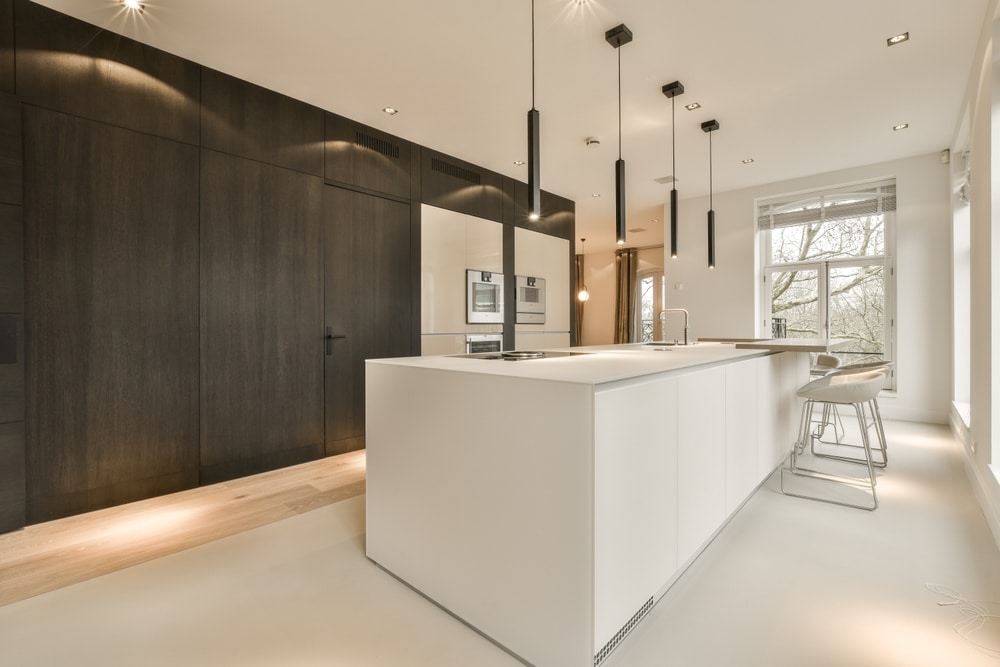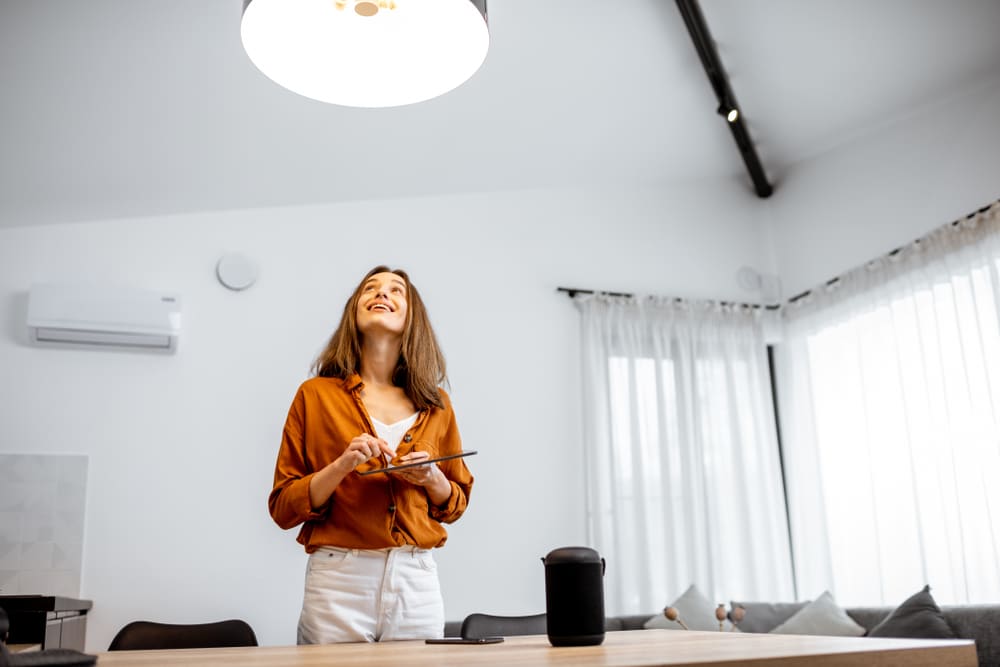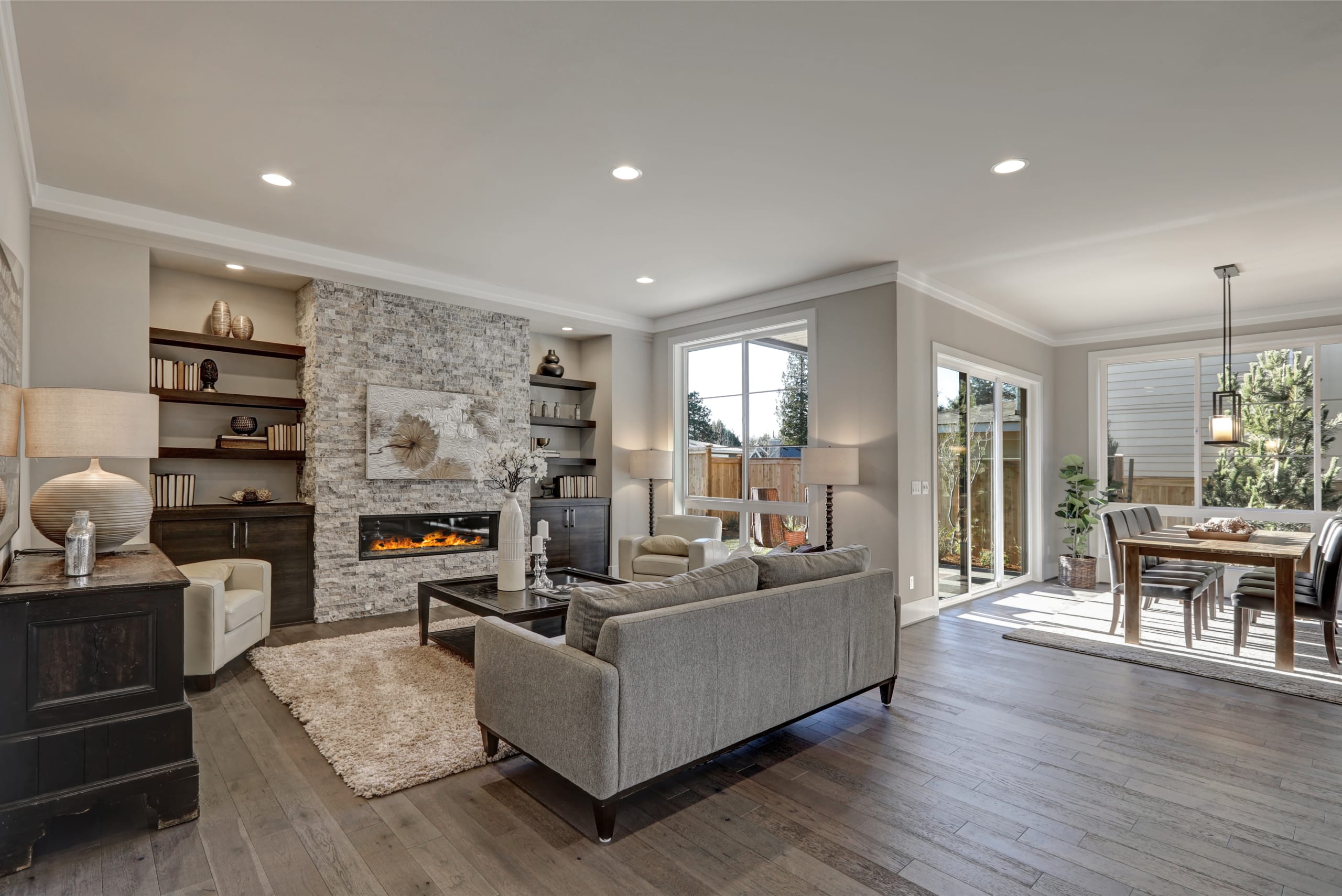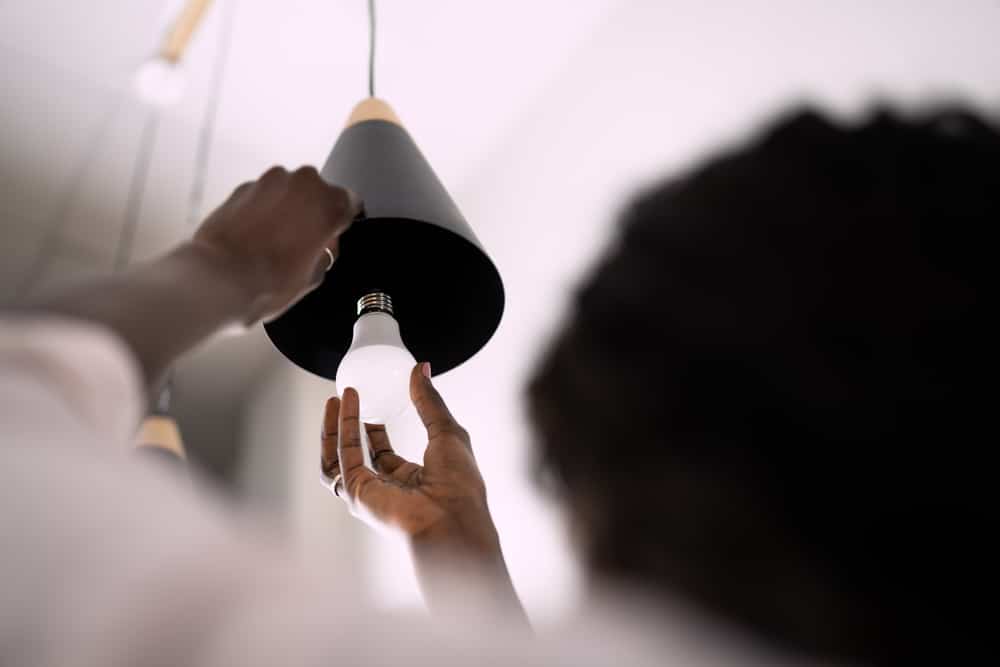Proper lighting can enhance your home’s ambiance, function, cost-efficiency, and security. Beyond aesthetics, the lighting in your home can have psychological impacts, like improving mood and relaxation. Interviews with field experts reveal common lighting mistakes and solutions for different spaces.
Table of Contents
- Impact of Lighting on Home
- Types of Lighting Fixtures
- Lighting Technologies and Trends
- Practical Lighting Designs
- Energy-Efficient Lighting Solutions
- Home Security Integration
- DIY Lighting Projects and Ideas
- The Power of Lighting Done Right
The Impact of Lighting on Home Atmosphere
The ambiance of a home goes far beyond visual aesthetics. Your home’s lighting environment can profoundly influence your motivation, mood, and mindset.
Psychological Effects of Lighting
Lighting design should complement natural human energy levels that ebb and flow through the day. Strategic lighting arrangements can minimize stress and nourish productivity, social connections, unwinding, and quality sleep. By recognizing these impacts, homeowners can upgrade previously overlooked lighting to support their needs.
How Lighting Influences Mood and Productivity
The interplay between lighting and human psychology manifests in mood and task performance within your home. Abundant natural light exposure improves positivity and motivation. Cool, white task lighting enables focus and productivity.
For bedrooms, choosing fixtures and bulbs that minimize blue wavelengths lends to creating a healthy circadian rhythm and more restful sleep. Flexible lighting setups that accommodate natural energy peaks and dips can aid in better rest, focus, and overall well-being.
Expert Interviews on Creating the Right Ambiance
To gain qualitative insights into lighting design strategies, we interviewed field experts to help uncover the secret to cultivating the ideal home environment through professional lighting strategies.
When asked about cultivating ambiance, Laura Lubin, CEO and Principal Designer, and Sydney Rosenberg, Head of Design at Ellerslie Interiors, had this to say,
“A dimmer switch can add significant value by enhancing the overall aesthetic and ambiance of a space. Dimmers help to facilitate smooth transitions between different lighting levels. This can be particularly useful in open-concept spaces or rooms with multiple functions, where the lighting needs may change from day to night. Functionality and versatility is key when it comes to lighting design.”
Types of Lighting Fixtures

When designing a lighting layout, select fixtures tailored to each room’s size, architecture, and function. Here are some common fixture varieties:
- Pendant Lights: Suspended lights for kitchen islands, dining rooms, and entryways. Size and height should suit the room’s proportions.
- Sconces: Wall-mounted lights to cast both ambient and task lighting. Well-suited for living rooms, bedrooms, and hallways.
- Chandeliers: Elevated, decorative centerpiece lights with cascading arms holding multiple bulbs. Designed for visual impact.
- Recessed Can Lighting: Canister fixtures are installed into ceilings to create uninterrupted illumination.
- Track Lighting: Modular lights installed on tracks allow for flexible positioning. Well-suited for kitchens, display shelves, and artwork.
- Accent Lighting: Directional lighting for highlighting architectural elements, greenery, or other focal points.
Analysis of Pendant Lights, Chandeliers, and Ceiling Fans with Lights
Pendant Lights
Pendant lights introduce sleek visual intrigue over islands, tables, and more while directing light right where needed. Mini-pendants in sets work for larger kitchen spaces for a cohesive look with abundant task lighting. In dining rooms, longer singular pendants add polish. Strategic pendant placement at varying heights accommodates seated and standing inhabitants.
Chandeliers
For focal points, crystal chandeliers refract light elegantly across living rooms. More modest chandeliers suit entryways and master bedrooms as well. Select chandelier sizes and designs to align with the ceiling height and decor style.
Ceiling Fans
Ceiling fans serve year-round by circulating air while also featuring integrated lighting. In warmer months, the fan cools while reducing air conditioning costs. Most ceiling fans have reverse settings to drive warmer air downward during colder days. Strategic ceiling fan placement allows optimal airflow and illumination across larger community rooms.

Lighting Technologies and Trends
Home lighting design is significant not just for appearance but also for cost, sustainability, and integration with other smart systems. Furthermore, a well-thought-out lighting plan can also enhance safety and security, providing adequate illumination for pathways, entry points, and potentially hazardous areas. As lighting technology rapidly evolves, learning the differences between these options enables homeowners to make knowledgeable investments.
LED vs. Incandescent vs. CFL Bulbs
The most prevalent home lighting debate centers around bulb technologies: LEDs versus CFLs versus incandescent options. While upfront costs vary, factors like lifespan, light quality, energy efficiency, and more reveal the best options for individual households:
- LED: Extremely durable at 10+ years with energy savings of about seventy-five percent over incandescent. More expensive upfront but has a high return on investment. Excellent light quality and produces very little heat compared to CFL and Incandescent bulbs. [1]
- CFL: Lasts 6-8 years and uses about seventy-five percent less energy than incandescent with brighter, whiter light. Contains trace mercury requiring special disposal. Most budget-friendly but releases about eighty percent of its energy in heat.
- Incandescent: Short 1-2 year lifespan with warm-toned light. Least efficient- requires high energy consumption, meaning operation costs add up and releases about ninety percent of its energy in heat.
Smart Lighting and Home Automation
Advanced lighting control systems are revolutionizing home illumination convenience, customization, and cost benefits. Known as “smart lighting,” these home automation solutions allow app and voice-activated lighting adjustments on demand.
Conveniences include scheduling lights to turn on/off when away. Customization perks like changing light colors, dimness levels, and groups of lights to control and create your desired ambiance any time of day. Smart bulbs also last years longer than average due to efficient power regulation when not in use.
Emerging Trends in Home Lighting Design
Sustainability concerns and health-centric lighting philosophies have formed many home illumination trends. Some of these trends include:
- Solar-Powered Lighting: From exterior landscaping to interior fixtures, solar energy storage cuts electricity usage and costs, especially in outdoor areas.
- Circadian-Supportive Lighting: Inspired by lighting conditions optimal for human health, these solutions naturally shift color temperatures and brightness across day/night cycles. Supporting circadian rhythms via properly timed light exposure boasts benefits like improved sleep and concentration. [2]
- Voice-Activated Lighting: Voice assistant integration allows you to control lighting using voice commands.
- LED Bulbs: Reduce lighting loads by seventy-five percent.
- Smart Lighting Controls: Auto on/off and natural light detection save up to eighty-nine percent wasted power.
- Solar-powered Lights: Aid in alleviating grid dependence.
- Adding layered lamps (floor, table, desk) in unused corners and surfaces.
- Installing plug-in pendant light kits wherever outlet access allows.
- Stick-on cabinet and shelf lighting powered by battery, USB, or plug-in to offer a customizable under-glow.
- Peel-and-stick wall sconces and step/pathway ground lights.
- String lights for shelving and patios infuse cozy vibes throughout any indoor or outdoor space.
Practical Lighting Design
As communal and working areas, spaces such as the kitchen and living room warrant creativity in balancing bright task lighting for hobbies and play with low evening glow for relaxation during movies and conversations.

Kimberly Greenwell, owner of My Southern Home TV, suggests maximizing your lighting control through the use of dimmer switches in living rooms, kitchens, dining rooms, and even bedrooms. These switches allow for customizable lighting levels, allowing for bright task lighting or dim ambient lighting on demand.
Additionally, smart lighting options or layered lighting can help achieve these goals. Greenwell goes on to say, “Layering lighting is very important. Homeowners should consider a mixture of recessed lighting, pendants, sconces, and chandeliers.”
Lubin further solidifies this point by advising the use of sconces to highlight architectural features, “Not only do they help to create a warm and inviting atmosphere, but they help bring attention to smaller details one might miss.”
Energy-Efficient Lighting Solutions
Beyond factors around visual appeal, functionality, and technology, environmentally-conscious homeowners should invest in sustainable lighting for substantial energy and cost savings over the long haul.
The Environmental Footprint of Lighting
Illumination currently makes up about fifteen percent of average home energy usage. [3] Homeowners can effectively work to reduce their carbon footprint through simple household swaps.

Efficient Bulbs and Fixtures
Homeowners can course-correct lighting demands before environmental harms scale any further globally by converting to certified energy-efficient options[4]:
Lighting and Home Security Integration
Beyond aesthetics, homeowners often overlook the pivotal role lighting plays in property safety and security systems.
Properly illuminating exterior access points provide invaluable crime-deterring benefits. Lights triggered by movement can reduce trespassing, break-ins, and vandalism through increased visibility, exposing perpetrators. Additionally, lighting elements like timers and motion sensors while away ensure properties avoid appearing vacant.
DIY Lighting Projects and Ideas
Budget-conscious homeowners can still have beautiful upgrades with more straightforward, affordable DIY solutions. Conquerable lighting projects include:
The Power of Lighting Done Right
Even modest lighting tweaks transform everyday spaces into extraordinary environments. The latest fixtures and smart bulbs also conserve energy and allow for on-demand customization. From psychological benefits and room-specific strategies creating dramatic before-and-afters – lighting’s profound impacts on home experiences cannot be overstated. Brightening up spaces benefits families now while securing sustainable savings for tomorrow.
Common FAQ’s About Home Lighting
Proper lighting makes rooms more enjoyable, functional, and safe. Additionally, adequate lighting enhances mood, productivity, and overall personal well-being.
Pick fixtures strategically for how each room and area will be used daily by considering general, task, and accent lighting needs. For multipurpose rooms, consider dimmer switches or smart lighting options.
LED bulbs are a great energy-efficient option. Homes may also benefit from smart lighting systems through the use of lighting schedules, light timers, and motion-activated lighting systems.
Smart exterior motion lights combined with interior home scheduling can deter intruders by increasing visibility and helping your home appear occupied even when you aren’t home.
Each room requires a unique fixture layout tailored to the purpose of the space. For example, kitchen or home office lighting should include cool-toned task lighting, while relaxation areas, like bedrooms, should have warmer-toned lighting to promote relaxation and restful sleep.



